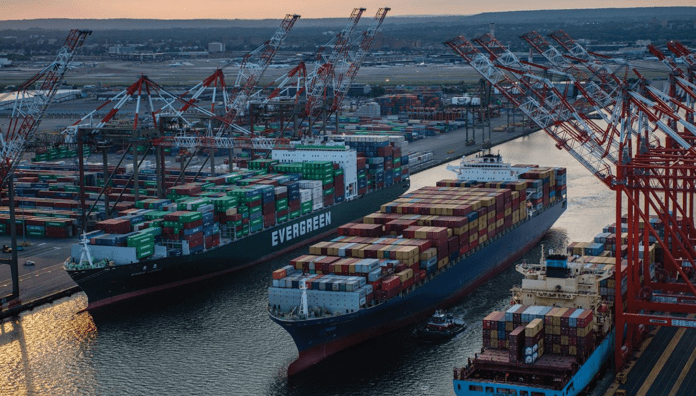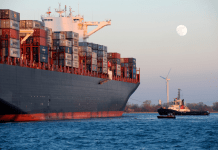
According to analysts at Sea-Intelligence, the current political landscape is marked by extreme volatility, with tariffs being imposed and lifted at a rapid pace. In this climate of uncertainty, both shipping lines and cargo owners are opting for short-term adjustments to their supply chains, holding off on major long-term network changes until the situation stabilizes.
For the period from the 16th to the 19th week of the year, the Danish shipping data experts have looked at the capacity scheduled at different points over the past six weeks to gauge the impact of tariffs.
On Asia-North America West Coast, 1.43 million TEUs was scheduled for deployment for weeks 16-19 in week 10. This remained consistent at week 11, and only slightly decreased to 1.40 million by the 12th week. In the next week, however, scheduled deployed capacity for weeks 16-19 dropped by 8% week/week to 1.29 million TEUs, further dropping to 1.37 million TEUs by week 15.
“Overall, this is 12% lower than what was scheduled six weeks ago,” pointed out Sea-Intelligence analysts.
On Asia-North America East Coast, scheduled capacity for weeks 16-19 declined from 1.01 million TEUs scheduled by week 10 to 867,000 TEUs scheduled at week 15, which represents a 14% decline across the six-week period.
The figure shows the blank sailings impact of the current tariffs on the combined Transpacific trade, i.e. combined across Asia-NAWC and Asia-NAEC.
Three weeks ago, 60,000 TEUs were scheduled to be blanked for weeks 16-19. This increased to 250,000 TEUs in the space of a week, as carriers announced a raft of blank sailings in response to the tariffs. Another significant increase came in week 15, with the total blanked capacity for weeks 16-19 increasing to 367,800 TEUs.
However, Alan Murphy, CEO of Sea-Intelligence, points out that the situation on the Transatlantic trade is notably different. “Capacity is largely holding steady,” he explains, “especially now considering a 90-day suspension of tariffs has been announced, by both the Trump administration and the European Union.”





